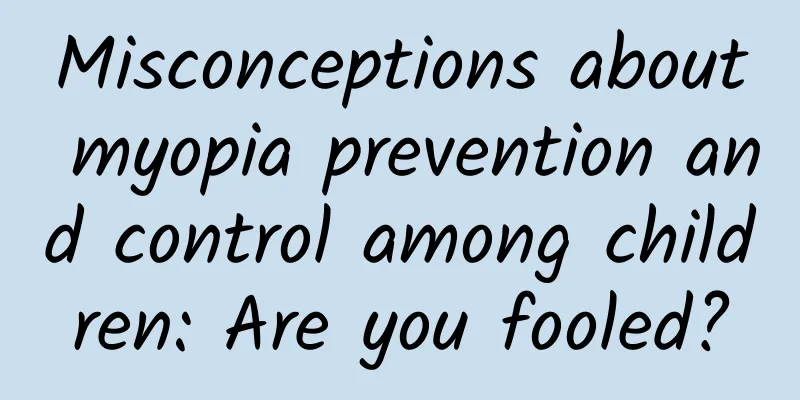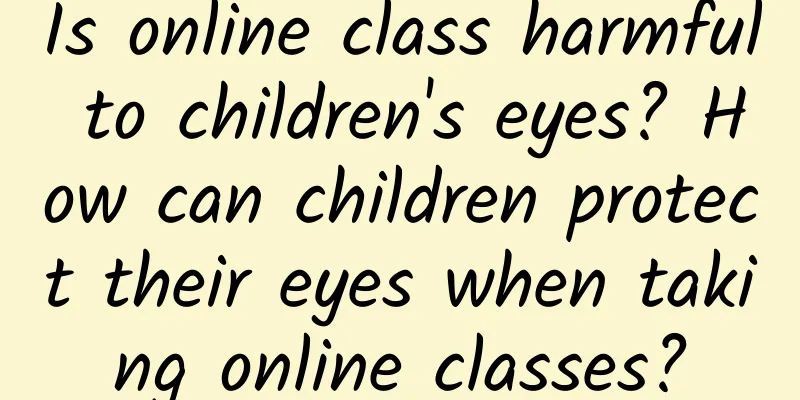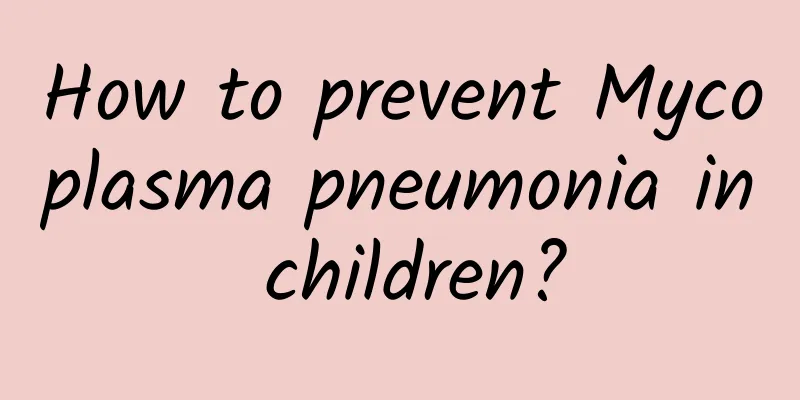Misconceptions about myopia prevention and control among children: Are you fooled?

|
Myopia is the most common refractive error, which is mainly manifested as blurred vision of distant objects, while vision is relatively normal. The World Health Organization has listed it as one of the blinding eye diseases that need to be solved urgently. In recent years, the popularity of electronic products has also led to a trend of myopia at a younger age. The increase in myopia rates among children and adolescents has made more and more parents of students anxious. Many parents still have many misunderstandings about myopia. Today, I will talk to you about some misunderstandings in myopia prevention and control. Myth 1: Children are young and will not be nearsighted Many parents believe that preschool children will not have myopia, and that they may develop myopia only after they go to school and use their eyes more. In fact, from the causes of myopia: genetic factors, parents' myopia may also activate their children's myopia; acquired environmental factors, such as children nowadays being exposed to electronic products at an early age and using them for too long, and not getting enough sleep and exercise, can also induce myopia. Therefore, it is generally recommended that children aged 3 can undergo a preliminary vision examination, and vision screening should be performed every three to six months, which can help to detect eye diseases, refractive errors, etc. as early as possible, and to intervene and prevent them in a timely manner. In addition, if parents find that their children look at the side, tilt their heads, squint, rub their eyes, or watch TV or books at a very close distance, they should take their children to a regular medical institution in time to establish a refractive development file for their children. Myth 2: Don’t let your child wear glasses if he/she is nearsighted. Wearing glasses too early will make the nearsightedness worse. When children become myopic, many parents are afraid of glasses. In fact, glasses are just a small tool that helps the eyes see clearly. Many parents think that once they put on glasses, they will never be able to live without them, and their myopia will become worse and worse. Is this really the case? In fact, myopia is caused by the eyeball "growing up". Objects cannot be focused on the retina but are focused in front of the retina, resulting in blurry vision at a distance and clear vision at close range. Glasses make up for the lack of functions of the "grown-up" eyeball and do no harm to the already myopic eyes. They only help the myopic eyeball to focus objects on the retina so that the eyes can see clearly. After myopia occurs, especially in children in the growth and development period, the degree of myopia will continue to increase. If the myopic eyeball is in an optically defocused state and cannot see clearly, the degree of myopia will increase faster if it is not given timely and accurate glasses. Myth 3: Children with myopia are given glasses directly without going to the hospital for examination When many parents discover that their children are nearsighted, instead of taking their children to specialized ophthalmology hospitals and clinics for examination, they take their children to an eyewear store to get glasses first. This is a very wrong behavior. Myopia is divided into pseudomyopia and true myopia. Pseudomyopia does not require glasses and can be treated through methods such as strengthening eye muscle exercises by the patient himself. However, if the child is directly tested and fitted with glasses like true myopia, instead of timely treatment, in the long run, pseudomyopia will turn into true myopia. The only way to distinguish pseudomyopia from true myopia is to dilate the pupil for optometry, but dilation optometry is medical optometry, which can only be performed in specialized ophthalmology hospitals and clinics. Ordinary eyewear stores cannot do it, otherwise it will easily cause damage to the child's eyes. Therefore, after parents discover that their children are myopic, they should immediately take their children to specialized ophthalmology hospitals and clinics for examination, rather than fitting glasses. Myth 4: Myopia can be cured by laser surgery when the child grows up In recent years, the effect of myopia surgery has been promoted by self-media to be miraculous. Some parents believe that myopia is not a serious disease and can be cured through laser surgery after adulthood. In fact, myopia cannot be cured. Laser surgery for myopia only changes the thickness of the cornea and reduces the refractive power of the cornea through cutting of the cornea, so that the light can be refocused on the retina. This can achieve the purpose of not wanting to wear glasses, but for eyes that are already myopic, the changes in myopic structure are irreversible. If you do not take care of your eyes after surgery, the degree may continue to increase, so you may need to wear glasses again, and the complications of high myopia are impossible to avoid. Therefore, a pair of suitable glasses will not only not deepen the degree of myopia, but will control the increase in the degree, slow down the development of myopia in children, and effectively prevent and control the rapid growth of myopia. Early intervention is even more important for children who may be at risk of high myopia in the future. Myth 5: Using 0.01% atropine eye drops to prevent and treat myopia without authorization or blindly Atropine is a very common ophthalmic drug. It is indispensable for inflammation inside and outside the eyeball, intraocular surgery, and accurate refractive correction in pediatric ophthalmology. In recent years, domestic and foreign research institutions have found that low concentrations of atropine (0.01% to 0.1%) can inhibit the growth of the eye axis caused by myopia, thereby delaying the rapid progression of myopia. But parents should note that this is only in the research stage, and there is no definite research report showing its true efficacy so far. There is also a most common problem in ophthalmology clinics. On the one hand, parents are concerned about the short-term use of atropine mydriasis optometry recommended by doctors, believing that mydriasis is harmful to the eyes and refuse to dilate the pupil. On the other hand, they blindly purchase it on behalf of their children and give them atropine drops every day without strict monitoring by doctors. Parents need to be aware that atropine is a highly toxic prescription drug. Even low concentrations of atropine still have certain side effects. After long-term use, many problems will occur, such as mydriasis, increased intraocular pressure, photophobia, blurred vision, flushing, fever, dry mouth and other symptoms. At present, it is mainly used in clinical practice for combined treatment of patients whose myopia is not effectively controlled by optical correction methods. However, its safety of long-term use needs further research and it needs to be used under the doctor's advice. Myth 6: Playing with your phone for one hour will damage your eyes, but reading and writing for 10 hours will not harm your eyes For teenagers, in addition to excluding the influence of genetic factors, there are two biggest acquired factors that cause the development of myopia: lack of outdoor activities and excessive close-range eye use. Although there is no substantial difference between electronic products such as mobile phones and iPads and carriers such as books and homework, they are essentially used at close range. Therefore, whether using electronic products or reading and writing, you need to rest your eyes regularly. Summer vacation is coming, and parents are also called on to supervise their children and not to be a very homebound child. In fact, the myopia of many children nowadays is not congenital, but acquired. It is necessary to start paying attention to it in the early childhood stage when children's myopia has not yet occurred, such as ensuring more than 2 hours of outdoor activities under natural light every day, because appropriate sunlight exposure can promote the secretion of the neurotransmitter dopamine in the eyes, thereby helping to inhibit the growth of the eye axis and prevent the occurrence of myopia. References: JONASJB,PANDA-JONASS.EpidemiologieundAnatomiederMypoie[J].Ophthalmologe,2019,116(6):499-508. Nie Yingying, Yang Yanrong, et al. Research progress on the effect of low-concentration atropine on the prevention and control of myopia in children and adolescents[J]. Chinese School Health, 2019, 42(9): 1431-1440. Li Lihong. Common misunderstandings in the prevention and control of myopia in children. Have you fallen into this trap? [J]. China Optical Science and Technology Magazine, 2018, 12: 94-97. |
>>: Morning Consult: Only 17% of American adults are interested in iPhone 8/8 Plus
Recommend
Can pregnant women drink antiviral granules?
Antiviral granules have the effects of clearing a...
Can I have induced labor after a caesarean section?
I believe that many female friends prefer natural...
Reasons for late menstruation
If you haven't had your period for a long tim...
What are the reasons why women can’t sleep?
Many women suffer from insomnia, often waking up ...
How can I make water spray from below
Now for many people, sex is an indispensable part...
Symptoms of vaginal yeast infection
The vagina has always been a private area of wo...
Do I need to stay in bed after fallopian tube removal?
Fallopian tube removal is a very common operation...
Ruili adds 3+2! National-level veterans set out again, latest judgment →
From 0:00 to 24:00 on July 5, Yunnan Province add...
When is the due date for pregnancy in March?
If you don't calculate the due date when you ...
Do pregnant women need to fast for prenatal check-up?
Pregnancy check-ups will accompany women througho...
How long after changing the ring can I have sex
The IUD has a certain service life. If it falls o...
What causes vaginal itching and odor?
Many female friends have experienced vaginal itch...
Can I eat dog meat after an abortion?
Everyone knows that a normal woman cannot go to t...
What is the disease of female left breast pain
Breasts are the symbol of femininity. Healthy bre...









